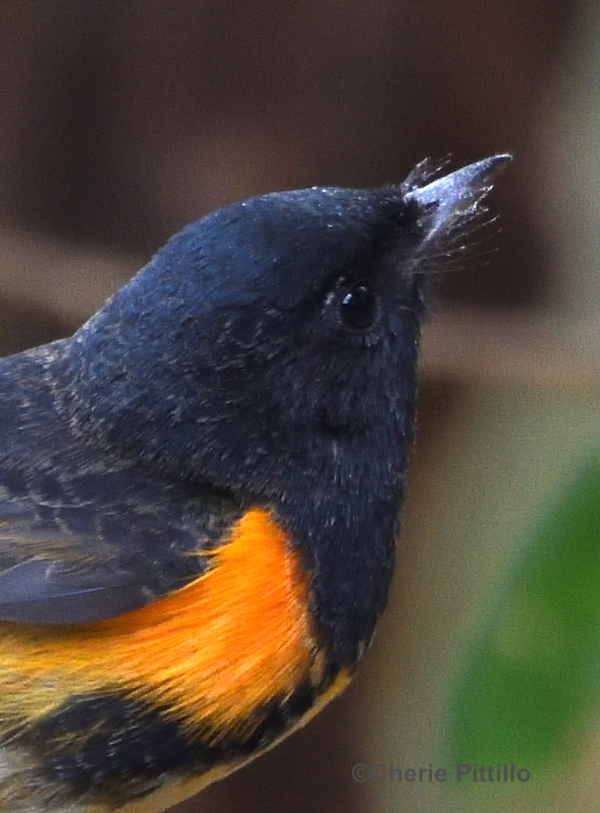When I began photography in the olden times of slide film (can you say Kodachrome?), I concentrated on mammals, those great creatures with fur. Birds appeared when other wildlife didn’t but they were never my main focus until I moved to Merida, Yucatan in 2007. Behind my home, an empty lot covered in shrubs, vines, and trees, implored me to watch the wildlife there. The tallest, leafless tree I named the
“Barreness,’’ who beckoned me to observe the diversity of her many feathered friends where she provided respite. Finally I ordered my first digital camera in 2010.

In 2011 I began my weekly column for The Yucatan Times using bird images as encouragement for people to observe nature for a truly balanced life. Plus readers learned of several local parks with an abundance of fresh water, an uncommon factor in the Yucatan Peninsula, but a common attractant for birds. In five years I’d recorded 56 species in my backyard in this city of about 1,000,000 people because that undeveloped lot offered food and shelter.

Last month I participated in a photo workshop in Clemson, South Carolina in a different backyard. Owner Carl Ackerman converted his home space, which sits on 2.5 acres into a birding oasis with a tiny waterfall, slow moving stream, native plants and trees, and rocks along with various bird feeders. He also built a reflection pool. A maximum of five photographers can sit, talk, and actually not disturb the birds in a bird blind at either location. The blind at the stream is named The Nut House and the link is here:
This set-up works well for resident birds but importantly the stream entices migrating birds to drink and bathe. Plus all birds have a choice to select from the menu of berries, nuts, seeds, insects, and/or suet. Spring and fall are the most active times at The Nut House. How amazed to see a female Eastern Towhee and a Scarlet Tanager sharing a bath in that tiny stream … or anywhere!



If you’ve ever had the chance to watch the frantic antics of either a male or female American Redstart, then you’d appreciate the opportunity to photograph them as they stop their manic behavior of hopping straight up, swishing their tails side to side, frantic limb chasing, and perching for a nano-second to be intrigued at running water.



So why I am writing this specific column? My reasons are many and I’ll list a few in no particular order.
Carl is an award-winning photographer with published images in many sports magazines and a jaw-dropping national college football championship book. But he’s given that up to put his heart and soul to provide this backyard bird haven. And I do mean haven because he was able to save this land from development. His workshop costs basically cover bird food. I think his efforts could inspire others to improve their city backyards with native plants, water, appropriate food, and shelter.
We know our avian friends have declined in billions of numbers and still do. As the human population continues to expand, having these “relief centers” in cities will be important for sustainability of birds. They remind me of wildlife corridors, land areas which connect to provide a means for predators to escape road crossings and population encroachment.

Plus I want to showcase a few species that are in the US who then migrate through or stop over as winter visitors in the Yucatan Peninsula or Mexico.

Also, I need to continue to learn more technical details about photography. Carl is a splendid teacher and his laid-back persona may appear to mask his photographical knowledge, but he can explain the why’s and how to’s clearly.
And last, but not least, I was able to photograph species I seldom have a chance to see up close much less photograph and observe their behavior without binoculars. Usually when I look at warblers with my binoculars, my neck can only tolerate looking high in the canopy for a short time. I never thought I’d see these specific small songbirds drink water or bathe.


I’ve scattered a few images from the workshop in the column. Here are a couple more and gray squirrels and chipmunks joined the feathered fiesta!


DON’T LET NATURE BECOME WHERE THE WILD THINGS WERE.
DISCLAIMER: I may not have found the latest research in my efforts.
Yucatan Peninsula Bird List/July 2019, Sal a Pajarear Yucatán (Guía de Aves), Birds and Reserves of the Yucatán Peninsula. A Guide to Birds of Mexico and Northern Central America,
Cherie Pittillo, “nature inspired,” photographer and author, explores nature everywhere she goes. She’s identified 56 bird species in her Merida, Yucatan backyard view. Her monthly column features anecdotes about birding in Merida, Yucatan and also wildlife beyond the Yucatan.
Contact: [email protected] All rights reserved, ©Cherie Pittillo



1 comment
That place sounds divine! What a thrill to see warblers at eye level. Wonderful pictures as usual.
Comments are closed.